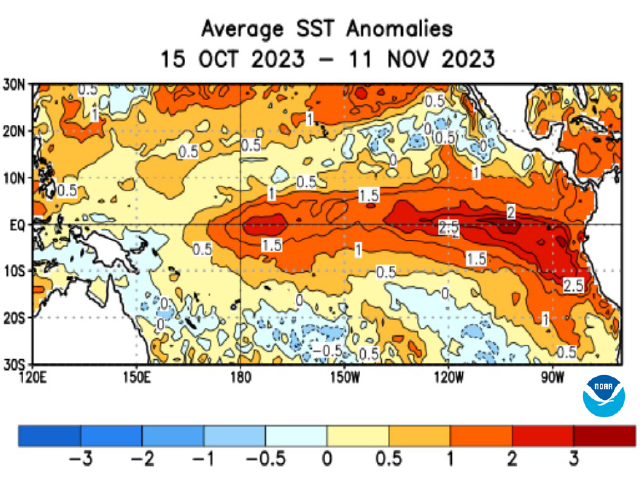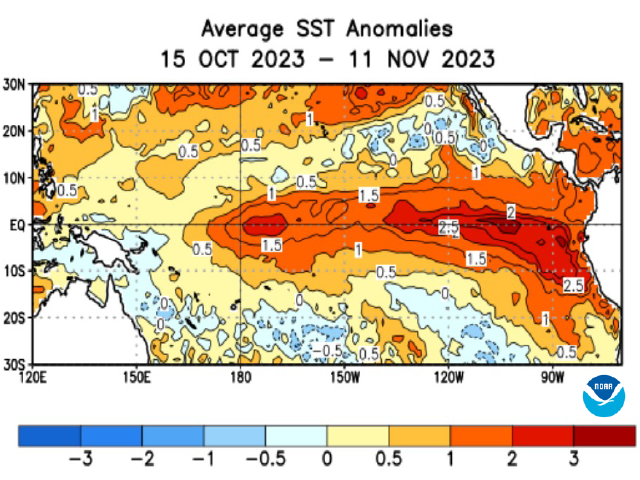Ag Weather Forum
El Nino Keeps Lowering Australia Wheat Crop
El Nino is definitely in place over the central and eastern Pacific Ocean in the vicinity of the equator. Mid-November analysis of Pacific sea surface temperatures around the equator show the ocean temperatures either matching or exceeding the 1 degree Celsius above average threshold for an El Nino assessment. The warmest values at 2 to 3 degrees C are in the eastern Pacific off the coast of South America.
Meanwhile, the atmospheric component of El Nino, the Southern Oscillation Index (SOI), also displays a solid El Nino trend. The 30-day SOI as of Nov. 17 was analyzed at minus 9.99 by the Australia Bureau of Meteorology, joining the sea surface temperatures in El Nino territory. (Barometer readings at Darwin, Australia and on the island of Tahiti are used in calculating the SOI.)
P[L1] D[0x0] M[300x250] OOP[F] ADUNIT[] T[]
Australia's wheat crop size has a high correlation to Pacific Ocean conditions. When La Nina is in effect (with cooler-than-average Pacific equator temperatures), Australia's wheat regions usually get more rainfall with the prospect of a large wheat crop; indeed, Australia wheat growers brought in a record crop last year with almost 39.7 million metric tons (mmt) of wheat. This year, with El Nino in place, the story is different. El Nino is a dry weather maker in Australia, and the nation's wheat crop estimate is showing a significant downgrade. The total Australia 2023 wheat crop is estimated by USDA to come in at 24.5 mmt, 15.2 mmt or 38% lower than the 2022 harvest.
The wheat output decline is shared by practically every state in Australia. The big production state in the east, New South Wales, faces a 35% decline in its wheat output this year, from 10.15 mmt in 2022 to 6.6 mmt in 2023; this is the first time in four years that New South Wales is expected to bring in less than 10 mmt for its wheat harvest, according to the New South Wales Department of Primary Industries. And, across the continent, the state of Western Australia is estimating its wheat production at 7.85 mmt, a decline of 21% from the first estimate issued back in July and down 44% from a big harvest of 13.93 mmt in 2022, according to the Grain Industry Association of Western Australia.
The presence of El Nino may keep on putting pressure on the Australia wheat harvest volume before the entire crop is out of the field. The November U.S. Climate Prediction Center (CPC) El Nino Advisory notes that "El Nino is anticipated to continue through the Northern Hemisphere spring (with a 62% chance during April-June 2024)." The full CPC briefing is available here: https://www.cpc.ncep.noaa.gov/….
Bryce Anderson can be reached at Bryce.Anderson@dtn.com
(c) Copyright 2023 DTN, LLC. All rights reserved.





Comments
To comment, please Log In or Join our Community .